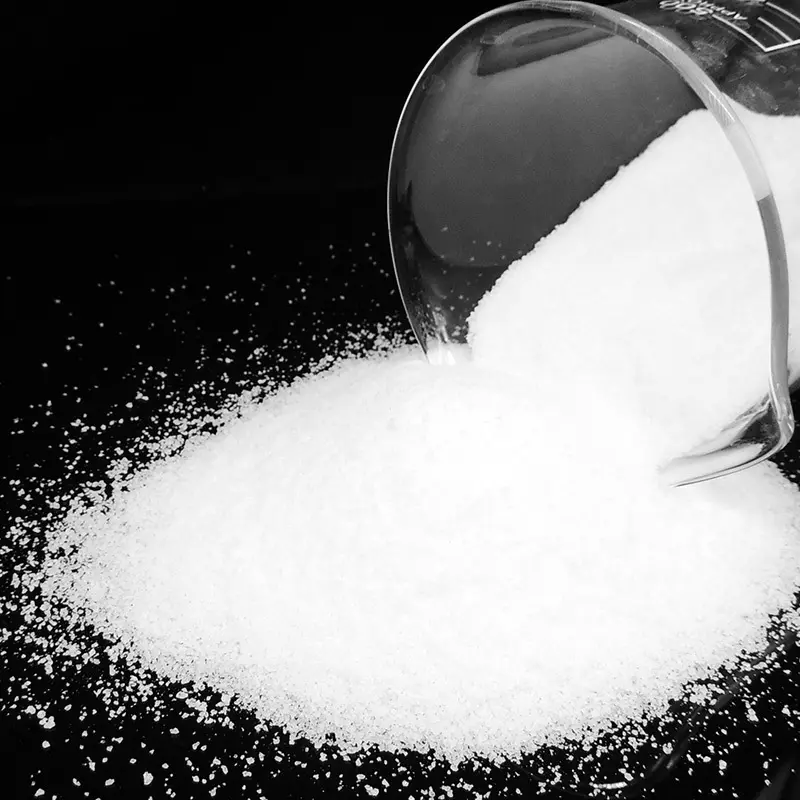In water bodies, polyacrylamide (PAM) can interact with suspended particles, effectively accelerating the aggregation and sedimentation of these particles, thereby achieving a purification effect. However, currently, there are many varieties of polyacrylamide available in the market, and their ionic degrees vary. This raises an important question: Does the ionic degree of polyacrylamide directly affect its flocculation efficiency? This article discusses this issue, analyzing the impact and mechanism of ionic polyacrylamide on water treatment processes.

The ionic degree refers to the ratio of the number of charged groups in the polyacrylamide molecule to its molecular weight, which is an important indicator characterizing its electrical properties. The level of ionic degree directly affects the flocculation effect of polyacrylamide.
Results show that polyacrylamide compounds with high ionicity, in aqueous solutions, due to the increase in their charge, enhance the electrostatic force between them and the suspended particles in the water, endowing them with stronger adsorption capabilities. This adsorption helps small particles aggregate into larger flocs. It also facilitates more “bridging” between particles, beneficial for the formation and growth of flocs. Moreover, it accelerates the flocculation process, as the enhanced adsorption and bridging actions make it easier for suspended particles to cluster together.
However, an excessively high ionic degree can also produce some negative effects
In practical applications, due to the presence of impurity ions in domestic wastewater, using specialized polyacrylamide flocculation can result in overly rapid flocculation rates, which is detrimental to subsequent coagulation and sedimentation, preventing deep purification of wastewater.
An excessively high ionic degree may weaken the interaction between polyacrylamide and suspended particles due to the presence of charge shielding effects, reducing flocculation efficiency. Also, under certain conditions, its solubility may change, limiting its application in the field of water treatment.
Usage Methods of Polyacrylamide
Ⅰ.When using polyacrylamide, it can be prepared into a 0.01%-0.05% concentration aqueous solution of anionic polyacrylamide, preferably using neutral water without salt impurities.
Ⅱ.When dissolving polyacrylamide, evenly sprinkle the product into stirring water, controlling the stirring speed at 100-300rpm. Appropriate heating (<60℃) can accelerate dissolution. The water temperature affects the dissolution rate and flocculation kinetics of polyacrylamide. Generally, as the temperature increases, the flocculation rate accelerates.
Ⅲ.Adjust the pH of the liquid to be treated, to fully utilize the polyacrylamide product, and select the appropriate pH value and product dosage through experiments. Different pH values affect the charge state of particles in water and the flocculation performance of polyacrylamide. Some polyacrylamides perform better under acidic or alkaline conditions.
Ⅳ.When adding the polyacrylamide product solution, accelerate the mixture with the treated liquid and ferric sulfate, and when flocculation appears, slow down the stirring speed to facilitate floc growth and accelerate sedimentation.
In summary, we can see that the influence of polyacrylamide’s ionic degree on its flocculation effect is complex and multifaceted. Although a certain ionic degree is necessary to improve the flocculation effect, it is not true that the higher the ionic degree, the better the flocculation effect. Therefore, when selecting and using polyacrylamide, it is essential to conduct a comprehensive analysis and combine specific usage requirements, performing a comprehensive analysis and reasonable matching.
